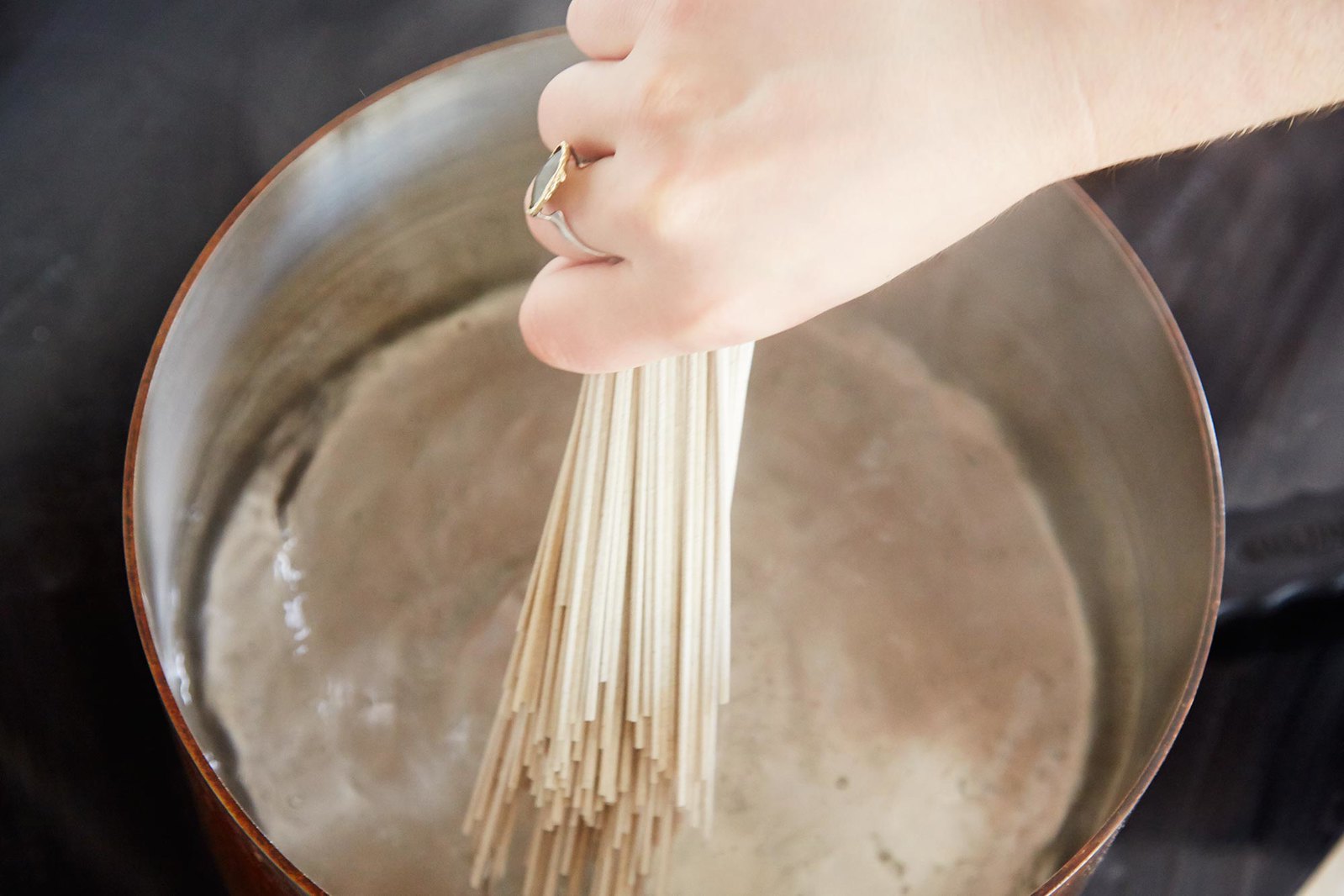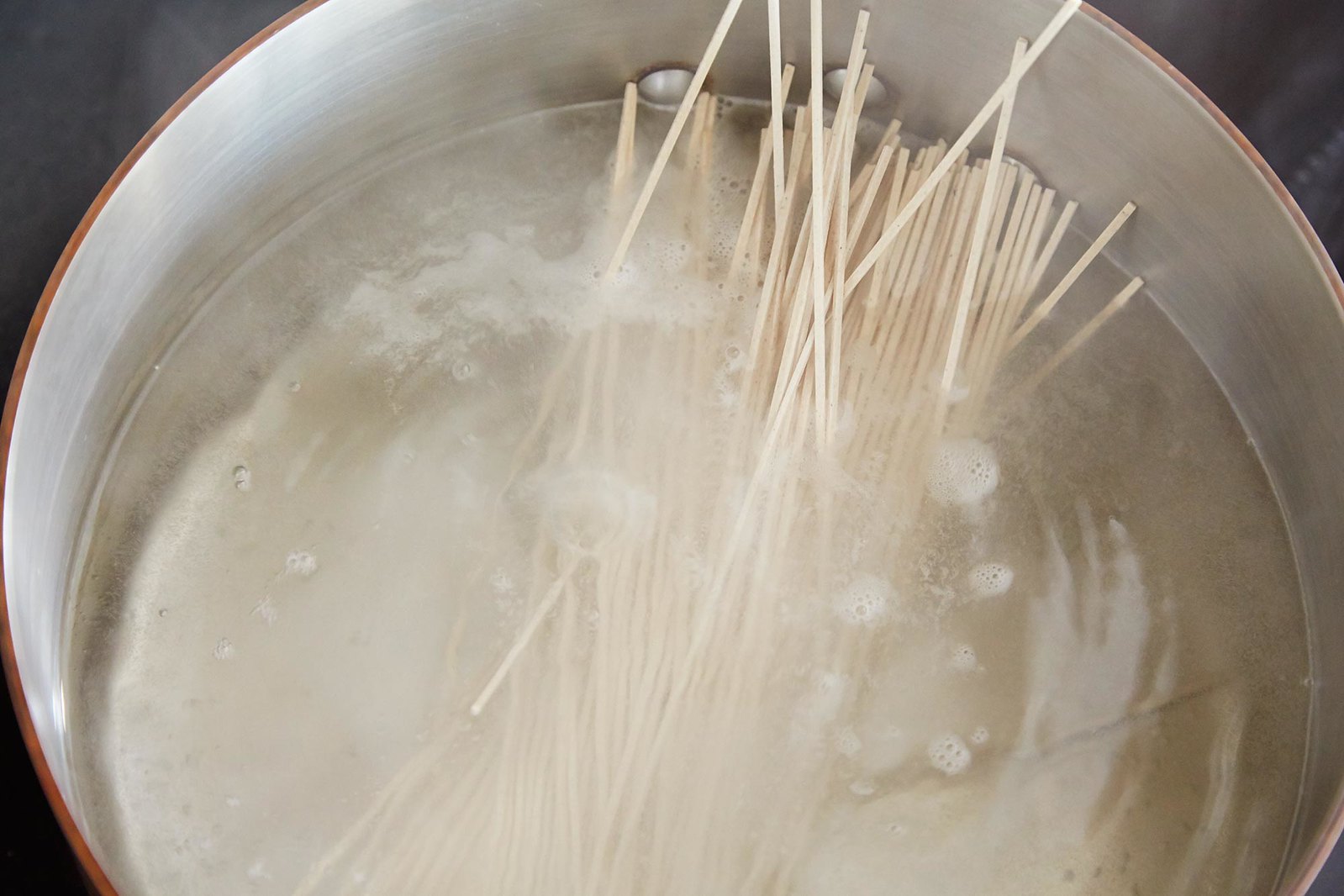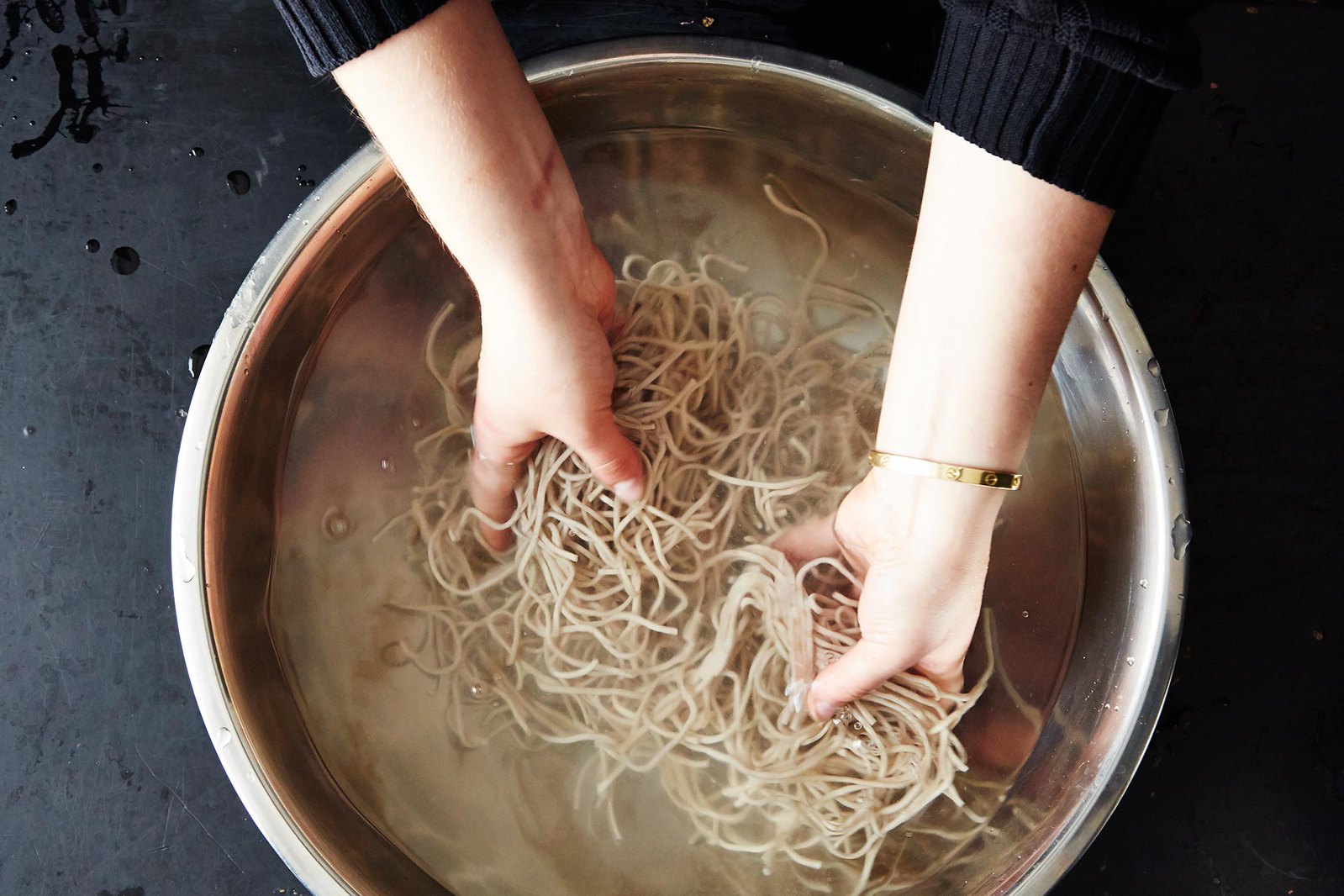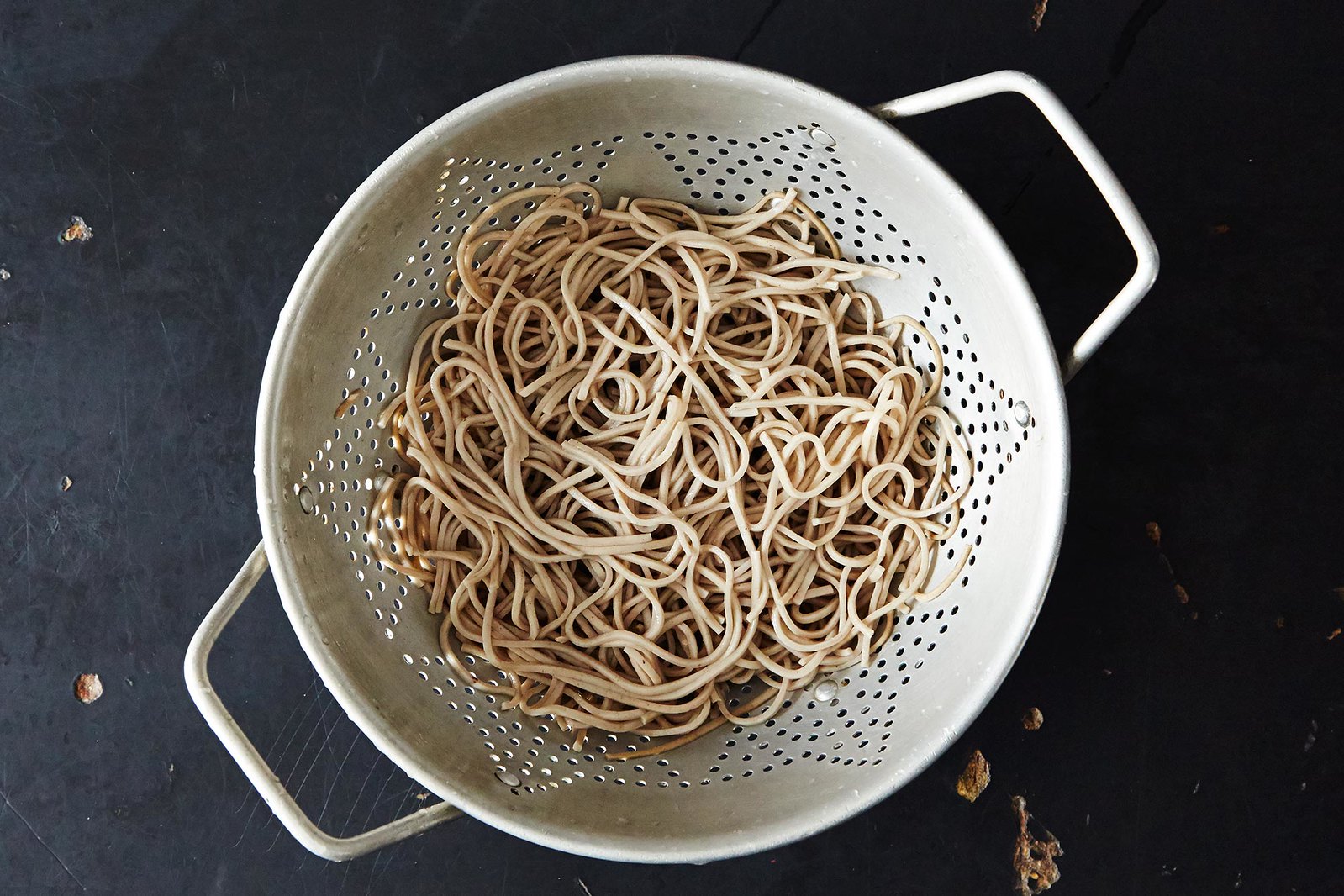From Food52.
If you’ve ever eagerly anticipated sneaking a bite from a bowl of perfectly-dressed soba noodles, and instead were left staring at a glob of tangled noodles at the end of your chopsticks, we feel your pain. And we’re here to make sure that never happens again.
The secret? You need to wash your noodles. Really. For some reason, most packages of soba noodles don’t tell you this -- but now you’re in on the secret, and no longer need to battle soba that's stuck together and gluey. While you run to your pantry to incredulously look at what's not there on the package, make sure your noodles are made from all (or mostly) buckwheat flour; if they aren’t, buy different ones the next time you’re at the store.
Here's how to cook them -- properly.

Get a big pot of water boiling -- and despite our prior yammering, don’t salt the water. Once it's boiling, add the soba noodles, and give them a quick stir to make sure they all go under water.

Let the water return to a boil, then reduce the heat a little, to keep the water at a simmer. Let the noodles cook for the time prescribed on your noodle package, probably between 5 and 8 minutes -- set that kitchen timer! Meanwhile, ready your colander in the sink, and prepare a big bowl of cold water. (Not an ice bath, though: You want it cold, but not so cold you can’t comfortably stick your hands in.)
More: Cooking with other types of noodles? Here are 3 ways to cook pasta.

Pull out one noodle from the pot to check for doneness. Soba should not be al dente, it should be fully cooked -- but not cooked for so long that it is mushy. When the noodles are done, drain them into the waiting colander, and then promptly dump them into the bowl of cold water.

Now wash your soba noodles. Stick your hands in the cold water, grab handfuls of noodles, and rub. Fairly aggressively. In a noodle-loving way. You're washing off the excess starch, and thus preventing a gummy pile of noodles.

Drain again in the colander, let them sit for a minute to let additional water drip off, and then proceed with your recipe. You can use them cold -- try them dressed in a cold noodle salad or bundled into little nests for dipping into sauce -- or you can warm them back up. Just give them a quick dunk in hot water or add to a soup right before serving.
We consider the one-bowl wash to be the happy medium of soba noodle prep. In Japanese Farm Food, Nancy Singleton Hachisu shares that her Japanese husband uses two bowls of cold water for a double-dip. On the other hand, when pressed for time, we’ve been known to just wash the noodles in the colander (after draining them) with lots of cold water running over them. Both methods are less likely to impress Mother Earth, so stick with the middle ground.
Photos by James RansomThe simple substitution of Tamari for soy sauce makes this peanut sauce gluten-free friendly. With some brown rice noodles in the cupboard, you can throw this dish together in less time than it takes to call for take out.
Makes 1 cup
- 1inch peeled, fresh ginger
- 1clove garlic
- 1tablespoon honey
- 1teaspoon Sriracha
- 1/2cup smooth peanut butter
- 1/4cup gluten-free tamari
- 1tablespoon rice vinegar
- 1tablespoon toasted sesame oil
- Scallions, for garnish
- In a small food processor or blender, combine all the ingredients and purée until coarsely combined. Add 1/4 cup warm water and purée until smooth. Add more water as necessary so the peanut sauce is similar to the consistency of ranch dressing.
- Garnish with scallions and serve alongside shrimp or chicken skewers, as a topping for a rice bowl, or tossed together with noodles. Extra sauce can be stored in an airtight container for up to 2 weeks.
No comments:
Post a Comment